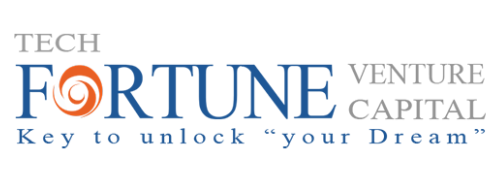“Digital Workspace Solutions: Remote Collaboration and Productivity Tools Unveiled”
In today’s fast-paced, digitally-driven world, remote collaboration and productivity tools are no longer just a convenience—they are a necessity. For venture capital firms, where agility and swift decision-making are paramount, having the right digital workspace solutions can make all the difference. This blog will explore the key aspects of digital workspace solutions, unveiling the tools and strategies that can enhance remote collaboration and productivity in the venture capital sector.
The Rise of Digital Workspaces
The concept of a digital workspace has evolved significantly over the past decade. What began as basic telecommuting has transformed into a comprehensive suite of tools designed to replicate and enhance the traditional office environment. The COVID-19 pandemic accelerated this evolution, pushing companies to adopt remote work en masse and highlighting the importance of robust digital infrastructure.
For venture capital firms, the ability to collaborate remotely is crucial. Investment decisions often require input from multiple stakeholders, including partners, analysts, and portfolio companies. Effective digital workspace solutions can streamline these interactions, ensuring that everyone is on the same page, regardless of location.
Key Components of a Digital Workspace
A digital workspace encompasses several key components that work together to create a seamless virtual environment. These include communication tools, project management software, file sharing platforms, and security protocols. Each component plays a vital role in enabling remote collaboration and maintaining productivity.
1: Communication Tools:
Effective communication is the backbone of any successful remote collaboration strategy. Tools like Slack, Microsoft Teams, and Zoom have become indispensable for real-time messaging, video conferencing, and collaboration. These platforms offer various features, such as channels for topic-specific discussions, direct messaging, and integrated video calls, allowing team members to stay connected and engaged.
2: Project Management Software:
Keeping track of projects and tasks is essential for maintaining productivity in a digital workspace. Project management tools like Trello, Asana, and Monday.com provide a centralized platform for organizing tasks, setting deadlines, and tracking progress. These tools enable teams to collaborate on projects, assign responsibilities, and monitor milestones, ensuring that everyone is aligned and working towards common goals.
3: File Sharing and Collaboration:
Efficient file sharing and collaboration are critical for remote teams. Cloud-based platforms like Google Drive, Dropbox, and OneDrive allow users to store, share, and collaborate on documents in real-time. These tools offer version control, access permissions, and seamless integration with other productivity software, making it easy for team members to work together on documents, spreadsheets, and presentations.
4: Security Protocols:
With the increased reliance on digital tools comes the need for robust security measures. Cybersecurity is a top priority for venture capital firms, as they handle sensitive financial information and confidential business data. Implementing security protocols, such as multi-factor authentication, encryption, and regular security audits, can help protect against data breaches and ensure the integrity of the digital workspace.
Enhancing Remote Collaboration
Remote collaboration goes beyond just having the right tools—it’s about fostering a culture of communication, trust, and accountability. Here are some strategies to enhance remote collaboration in a digital workspace:
1: Establish Clear Communication Channels:
Define the preferred communication channels for different types of interactions. For instance, use instant messaging for quick questions, video calls for meetings, and email for formal communication. Having clear guidelines helps reduce confusion and ensures that messages are delivered through the appropriate channels.
2: Promote Regular Check-Ins:
Schedule regular check-ins with team members to discuss progress, address concerns, and provide feedback. These check-ins can be daily, weekly, or bi-weekly, depending on the team’s needs. Regular interactions help maintain a sense of connection and ensure that everyone is aligned with the team’s objectives.
3: Encourage Collaboration and Knowledge Sharing:
Create opportunities for team members to collaborate and share knowledge. This can be done through brainstorming sessions, virtual workshops, and knowledge-sharing platforms. Encouraging collaboration helps leverage the collective expertise of the team and fosters a culture of continuous learning
4: Set Clear Goals and Expectations:
Clearly define goals, expectations, and deliverables for each project. Having well-defined objectives helps team members understand their roles and responsibilities, reducing ambiguity and increasing accountability. Use project management tools to track progress and ensure that everyone is working towards the same goals.
Boosting Productivity with Digital Tools
Productivity tools are designed to streamline workflows, automate repetitive tasks, and improve efficiency. Here are some ways to boost productivity in a digital workspace:
1: Automate Routine Tasks:
Identify repetitive tasks that can be automated using tools like Zapier or Microsoft Power Automate. Automation can save time and reduce the risk of human error, allowing team members to focus on more strategic activities.
2: Leverage Analytics and Reporting:
Use analytics and reporting tools to gain insights into team performance and project progress. Tools like Google Analytics, Tableau, and Power BI can provide valuable data to inform decision-making and optimize workflows.
3: Implement Time Management Techniques:
Encourage the use of time management techniques, such as the Pomodoro Technique or time blocking, to improve focus and productivity. These techniques help team members manage their time effectively and maintain a healthy work-life balance.
4: Provide Training and Support:
Offer training and support to help team members make the most of digital tools. Regular training sessions, webinars, and tutorials can enhance their skills and ensure they are using the tools efficiently.
Productivity Tools to Supercharge Efficiency
1: Asana
Asana remains a leading project management tool, and its recent updates have made it even more powerful. The introduction of Goals and Portfolios features allows venture capital firms to align their projects with broader organizational objectives. Additionally, Asana’s automation capabilities reduce manual work, freeing up time for more strategic activities.
2: Trello
Trello’s user-friendly interface and flexibility make it a popular choice for managing projects and tasks. The latest Power-Ups, such as integration with Google Workspace and enhanced reporting tools, provide venture capitalists with better visibility into project progress and team performance. These features help streamline workflows and ensure that nothing falls through the cracks.
3: Monday.com
Monday.com has gained traction with its highly customizable workflow automation and collaboration features. Its latest updates include advanced analytics and reporting, which are critical for venture capital firms to track the performance of their portfolio companies. The platform’s integration with various tools like Slack, Microsoft Teams, and Zoom further enhances its utility in a remote work setting.
Enhancing Security and Compliance
With the increasing reliance on digital tools, ensuring security and compliance has become paramount for venture capital firms. Tools like Okta and LastPass provide robust identity and access management solutions, ensuring that only authorized personnel can access sensitive information. Additionally, these tools offer features like multi-factor authentication and single sign-on, simplifying the login process while maintaining high-security standards.
The Role of Artificial Intelligence and Machine Learning
Artificial intelligence (AI) and machine learning (ML) are playing a pivotal role in transforming digital workspace solutions. Tools like Notion and Miro are leveraging AI to provide intelligent recommendations and insights, helping venture capitalists make more informed decisions. Notion’s AI-powered features include automated content suggestions and smart search, while Miro uses AI to enhance real-time collaboration on digital whiteboards.
Future Trends in Digital Workspace Solutions
Looking ahead, we can expect digital workspace solutions to continue evolving, with a greater emphasis on integration, automation, and personalization. Venture capital firms will benefit from tools that offer deeper insights through data analytics, enhanced virtual reality (VR) and augmented reality (AR) capabilities for immersive meetings, and more sophisticated AI-driven features to streamline workflows.
In conclusion, the latest digital workspace solutions are revolutionizing how venture capital firms operate, enabling them to collaborate more effectively and enhance productivity. By adopting and leveraging these cutting-edge tools, venture capitalists can stay ahead in a competitive landscape, making better decisions and driving greater value for their investors and portfolio companies. As technology continues to advance, the opportunities for innovation in the digital workspace will only grow, promising a future where remote collaboration is seamless and productivity is maximized.
Wrap up:
“Beyond Borders: Remote Collaboration and Next-Gen Productivity Tools”
As businesses adapt to the evolving landscape of work, remote collaboration and productivity tools are poised to play a central role in driving efficiency, connectivity, and innovation. Venture capital investment continues to fuel the development of cutting-edge solutions that empower teams to collaborate effectively in virtual environments. Looking forward, organizations that embrace these technologies will not only enhance productivity but also maintain a competitive edge in an increasingly digital world.
In the evolving landscape of remote work, collaboration and productivity tools have become indispensable. From project management platforms to video conferencing solutions, these tools streamline communication and enhance teamwork across geographies. Techfortune Venture Capital plays a pivotal role by investing in and supporting innovative tech solutions that empower businesses in this digital transformation.
By funding cutting-edge tools and technologies, Techfortune enables organizations to optimize remote workflows, foster creativity, and maintain high productivity levels. Whether through financing new software developments or scaling existing platforms, Techfortune Venture Capital ensures that businesses have access to the tools needed to thrive in the future of work. Emphasizing efficiency and connectivity, their investments pave the way for seamless collaboration and sustained growth in a decentralized work environment.
FAQ:
Businesses should prioritize tools like project management software (e.g., Asana, Trello), video conferencing platforms (e.g., Zoom, Microsoft Teams), and communication apps (e.g., Slack, Microsoft Teams) to facilitate seamless remote collaboration and productivity.
These tools streamline communication, project tracking, and task management, fostering real-time collaboration among remote teams. They reduce reliance on emails, centralize information, and ensure transparency across projects.
Techfortune Venture Capital invests in innovative technologies that enhance remote collaboration, funding startups and scaling businesses that develop cutting-edge tools for efficient virtual teamwork.
Businesses should prioritize tools with robust security features, such as end-to-end encryption for communication and data protection measures compliant with industry standards (e.g., GDPR, HIPAA).
Trends include AI integration for automation, virtual reality (VR) for immersive meetings, and enhanced analytics for performance tracking. Techfortune Venture Capital supports these innovations, driving the evolution of remote work tools toward greater efficiency and user experience.

